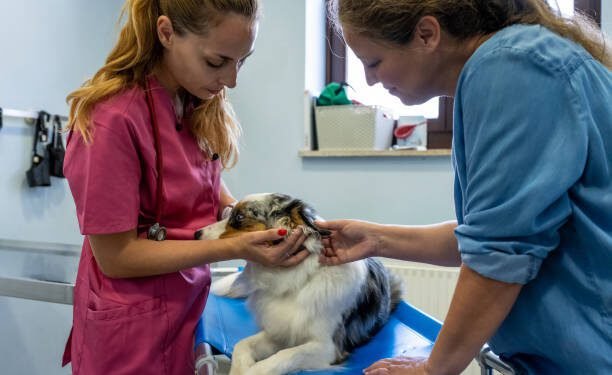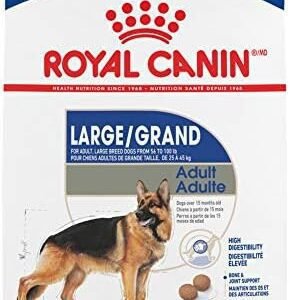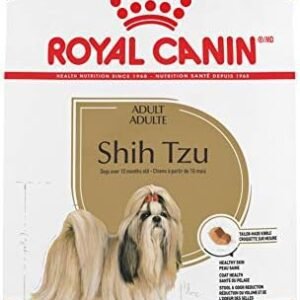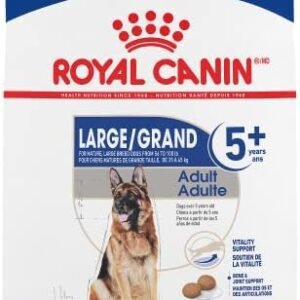I. Introduction
In the realm of canine healthcare, it’s essential to have a comprehensive understanding of medications that can make a difference in your furry friend’s life. This article is dedicated to Bute for dogs, a medication that has gained prominence for its potential benefits and its role in enhancing the well-being of our four-legged companions.
Our primary goal is to empower dog owners with accurate knowledge that will allow them to make informed decisions about their pets’ health. However, it’s crucial to remember that when it comes to your dog’s health, consulting a qualified veterinarian is a step that should never be skipped. This article can serve as a valuable resource, but professional guidance remains irreplaceable.
Now, let’s begin with a summary table of essential information about Bute for dogs, designed to provide a quick reference point for veterinary use:
Table of Contents
Bute for Dogs – Summary Table
| Common Names | Phenylbutazone |
|---|---|
| Drug Type | Nonsteroidal Anti-Inflammatory Drug |
| Used For | Pain Relief, Inflammation Control |
| Administered | Tablets, Oral Liquid, Injectable |
| FDA Approved | No |
Before delving into the specifics, let’s understand the critical importance of consulting a veterinarian before introducing any medication to your canine companion. Veterinarians are trained professionals who can assess your dog’s individual needs and recommend the most suitable treatment, ensuring the highest standard of care. While this article provides valuable insights, it is not a substitute for professional advice.
The purpose of this article is to shed light on the medication Bute and offer detailed information that allows you to be well-informed about its uses, benefits, potential side effects, and more. With this knowledge, you’ll be better equipped to engage in meaningful discussions with your veterinarian and play an active role in your dog’s health and happiness.
In the following sections, we will explore what Bute is, how it functions within a dog’s body, the conditions it can address, and much more. Let’s continue our journey to understand the many facets of Bute for dogs.
II. Understanding Bute
In the world of canine healthcare, it’s essential to be well-versed in medications like Bute, understanding what it is, how it functions within a dog’s body, and the various conditions it can address. This knowledge empowers dog owners to take an active role in their pets’ well-being and contribute to their overall health.

What is Bute?
Bute, or Phenylbutazone, is a nonsteroidal anti-inflammatory drug (NSAID) that plays a crucial role in pain relief and the management of inflammation in dogs. It belongs to a class of medications designed to alleviate discomfort, primarily stemming from conditions causing inflammation, pain, and fever.
Phenylbutazone works by blocking specific enzymes, called cyclooxygenases (COX), that are involved in the production of prostaglandins. Prostaglandins are chemicals that mediate inflammation, pain, and fever. By inhibiting these enzymes, Bute helps reduce inflammation and alleviate pain, making it an effective option for managing various health issues in dogs.
How Does Bute Work in Dogs’ Bodies?
The mechanisms of Bute’s action in a dog’s body are centered around its ability to suppress inflammation, reduce pain, and lower fever. When a dog is affected by a condition that leads to inflammation and pain, such as arthritis, joint issues, or musculoskeletal injuries, Bute can be a valuable treatment.
Bute works by inhibiting the action of COX enzymes, specifically COX-1 and COX-2. COX-1 enzymes are involved in maintaining normal bodily functions, including protecting the stomach lining. COX-2 enzymes, on the other hand, are associated with inflammation and pain.
Bute primarily targets COX-2 enzymes, reducing the production of prostaglandins responsible for inflammation and discomfort. This targeted approach helps in minimizing inflammation and pain while preserving the essential functions governed by COX-1 enzymes.
Common Conditions and Ailments in Dogs that Bute can Treat or Manage
- Arthritis: Arthritis is a common condition in dogs, especially in older individuals. It leads to joint inflammation, stiffness, and pain. Bute is often prescribed to alleviate the pain and enhance mobility in arthritic dogs.
- Musculoskeletal Injuries: Injuries affecting the muscles and skeletal system can be painful and lead to inflammation. Bute helps manage pain and reduce swelling in dogs with such injuries.
- Fever: Bute is effective in lowering fever in dogs. It can be a valuable component of a treatment plan for dogs with febrile conditions.
- Other Inflammatory Conditions: Various inflammatory conditions in dogs, such as dermatitis, respond well to Bute’s anti-inflammatory properties. It helps reduce redness, swelling, and itching.
- Pain Relief Post-Surgery: Bute can be used to manage post-operative pain in dogs, making the recovery process more comfortable.
Understanding the conditions and ailments that Bute can treat or manage is vital for dog owners. It allows them to recognize when their pets might benefit from this medication and discuss its use with their veterinarian. However, it’s essential to remember that while Bute can be a valuable tool in managing certain health issues, it should always be used under the guidance of a veterinarian who can determine the appropriate dosage and duration of treatment based on the dog’s specific condition. In the next section, we will delve into the many benefits that Bute offers to dogs and how it can improve their quality of life.
III. Benefits of Bute for Dogs
When it comes to your furry companion’s well-being, ensuring they have access to the most effective treatments is of the utmost importance. Bute, or Phenylbutazone, is one such treatment that has demonstrated its efficacy in improving the lives of dogs facing specific health challenges. In this section, we’ll explore the various benefits of Bute for dogs, including its effectiveness in treating canine health issues and how it can enhance their quality of life.
Effectiveness in Treating Specific Canine Health Issues
1. Pain Management
Bute’s primary role in canine healthcare is pain management. It is especially valuable in addressing various painful conditions, such as arthritis, musculoskeletal injuries, and post-operative discomfort. The medication’s ability to inhibit COX-2 enzymes and reduce the production of inflammatory prostaglandins significantly contributes to pain relief in affected dogs.
For dogs suffering from arthritis, Bute can provide a new lease on life by alleviating the pain associated with this degenerative joint disease. It helps improve their mobility, making it easier for them to enjoy daily activities like walking and playing.
2. Inflammation Reduction
Inflammation is a common denominator in many health issues affecting dogs. It can lead to discomfort, swelling, and limited mobility. Bute’s anti-inflammatory properties play a crucial role in reducing inflammation, which is particularly helpful in conditions like dermatitis, where itchy and swollen skin can cause significant distress.
3. Fever Reduction
Dogs, like humans, can experience fevers as a response to infections or other underlying health problems. Bute is effective in lowering fever, providing relief to dogs suffering from febrile conditions. By addressing fever, Bute supports the overall recovery process.
How Bute Can Improve Dogs’ Quality of Life
- Enhanced Mobility: Dogs that are in pain or experiencing inflammation often struggle with mobility. Bute’s pain-relieving and anti-inflammatory properties can help them regain their mobility and enjoy a better quality of life.
- Improved Comfort: Bute’s effectiveness in pain management translates to improved comfort for dogs. This is particularly significant for older dogs or those with chronic pain conditions.
- Faster Recovery: After surgery or injury, dogs can experience significant discomfort. Bute aids in post-operative pain management, facilitating a faster and more comfortable recovery.
- Relief from Itchy Skin: Inflammatory skin conditions like dermatitis can be intensely uncomfortable for dogs. Bute reduces the redness and itching, offering relief and an overall improvement in their quality of life.
- Lowered Stress: Dogs in pain or distress may exhibit signs of stress or anxiety. Bute’s ability to alleviate pain and discomfort contributes to a calmer and happier disposition.
It’s important to note that while Bute offers many benefits, its use should always be supervised by a veterinarian. Determining the correct dosage, administration, and duration of treatment is crucial for your dog’s safety and effectiveness. Additionally, in the next section, we will discussthe proper way to administer Bute to dogs, including dosage guidelines and directions for use. This ensures that pet owners have the information they need to provide their dogs with the best possible care.
IV. Administering Bute to Dogs
Administering medication to dogs can be a complex process, and when it comes to a drug like Bute (Phenylbutazone), it’s crucial to ensure that the dosage, frequency of administration, and directions for use are followed meticulously. In this section, we will delve into the intricacies of administering Bute to dogs, emphasizing the importance of adhering to prescribed dosages.
Dosage Guidelines: Determining the Right Dosage
Determining the correct dosage of Bute for your dog is a task that requires careful consideration of various factors. These include the dog’s size, age, and the specific condition being treated. Additionally, your veterinarian will consider the dog’s overall health and any potential interactions with other medications your dog may be taking.
The general dosage of Bute for dogs typically ranges from 2 to 4 mg per pound of body weight, administered once or twice daily. However, your veterinarian will provide you with precise dosage instructions that are tailored to your dog’s unique needs.
Frequency of Administration: Daily, Weekly, or As Needed
The frequency of Bute administration depends on the condition being treated. For chronic conditions like arthritis or long-term pain management, your veterinarian may recommend daily administration. In cases of acute pain or post-operative discomfort, Bute may be administered for a shorter duration.
It is crucial to adhere to your veterinarian’s guidance regarding the frequency of administration. They will assess your dog’s response to the medication and adjust the treatment plan as needed.
Directions for Use: Tips for Administering Bute to Dogs
- With Food: Bute can be administered with or without food, but giving it with a meal can help minimize potential gastrointestinal upset. If your dog experiences stomach discomfort, consult your veterinarian for alternative administration methods.
- Hiding in Treats: Some dogs are sensitive to the taste of medications. To make administration easier, consider hiding the Bute tablet in a soft treat or a small amount of wet food. Ensure that your dog consumes the entire dose.
- Tablet or Liquid Form: Bute is available in both tablet and liquid forms. The choice between these two depends on your dog’s preferences and your veterinarian’s recommendations. Liquid forms may be easier to administer to dogs that are finicky about pills.
- Use a Pill Dispenser: Pill dispensers, available at most pet stores, can make the process of administering tablets easier. They help ensure the pill is placed at the back of your dog’s throat, reducing the chance of them spitting it out.
- Follow-Up with Water: After administering Bute, provide your dog with a small amount of water. This helps ensure that the medication goes down smoothly and reduces the risk of throat irritation.
- Record Keeping: Maintain a record of when you administer Bute to your dog. This will help you and your veterinarian track the medication’s effectiveness and ensure you don’t miss a dose.
Importance of Adhering to Prescribed Dosages
Adhering to the prescribed dosages is of paramount importance when administering Bute to your dog. Deviating from the recommended dosage can lead to under-treatment, where the medication is ineffective, or over-treatment, which can result in adverse effects. Your veterinarian carefully calculates the dosage to balance the medication’s benefits with potential side effects.
Missed Dose Guideline
If you accidentally miss a dose of Bute, it’s essential to follow these guidelines:
- Do Not Double Dose: If you’ve missed a dose, do not administer two doses simultaneously. Simply give the missed dose as soon as you remember, and then continue with the regular dosing schedule.
- Monitor for Effects: Keep a close eye on your dog for any changes in their condition or behavior. If you notice significant discomfort or pain, contact your veterinarian for further guidance.
- Regular Veterinary Check-Ups: Consistent veterinary check-ups are essential when your dog is on medication. If you miss a dose, your veterinarian can help assess the situation during your next appointment and make any necessary adjustments to the treatment plan.
In the next section, we will delve into the potential side effects and precautions associated with Bute in dogs, helping you make informed decisions regarding your pet’s well-being.
V. Potential Side Effects and Precautions
While Bute (Phenylbutazone) can be highly effective in managing pain and inflammation in dogs, it’s essential to be aware of the potential side effects and take necessary precautions to ensure your dog’s well-being. In this section, we’ll explore common side effects, how to identify severe or adverse reactions, and specific precautions to take, particularly in the case of pregnant or lactating dogs. We’ll also discuss possible interactions with other medications or supplements.
Common Side Effects of Bute in Dogs
Common side effects are typically mild and may include:
- Gastrointestinal Upset: Dogs may experience mild gastrointestinal disturbances, such as vomiting or diarrhea. These symptoms are usually temporary and may subside as your dog’s body adjusts to the medication.
- Loss of Appetite: Some dogs may temporarily lose their appetite while taking Bute. If your dog refuses to eat, consult your veterinarian for guidance.
- Mild Lethargy: Bute can cause mild drowsiness or lethargy in some dogs. This is generally not a cause for concern unless it becomes severe.
- Ulceration: In rare cases, Bute can lead to gastrointestinal ulceration. Watch for signs such as dark or bloody stools, abdominal pain, or vomiting that persists beyond the initial adjustment period.
Identifying Severe or Adverse Reactions
It’s crucial to be vigilant for any severe or adverse reactions to Bute in your dog. These can include:
- Allergic Reactions: Watch for signs of an allergic reaction, such as facial swelling, hives, difficulty breathing, or a sudden rash. If you notice any of these symptoms, discontinue the medication and seek immediate veterinary attention.
- Gastrointestinal Ulceration: As mentioned earlier, severe gastrointestinal issues, including dark or bloody stools, persistent vomiting, or abdominal pain, should be reported to your veterinarian without delay.
- Kidney or Liver Issues: Bute can affect kidney and liver function. Signs of potential problems include excessive thirst, frequent urination, jaundice (yellowing of the gums, eyes, or skin), and changes in urination habits. If you observe any of these symptoms, contact your veterinarian.
- Behavioral Changes: Unusual changes in behavior, such as severe lethargy, agitation, or disorientation, may indicate a severe reaction to the medication.
Precautions for Pregnant or Lactating Dogs
If your dog is pregnant or lactating, it’s essential to exercise additional caution when considering the use of Bute. While Bute is generally considered safe for pregnant dogs when used according to your veterinarian’s instructions, there are some precautions to keep in mind:
- Consult with Your Veterinarian: Before using Bute, especially if your dog is pregnant or lactating, consult your veterinarian to determine whether the benefits of the medication outweigh any potential risks.
- Use as Prescribed: If your veterinarian recommends Bute, make sure to adhere to the prescribed dosages and treatment plan. This ensures that your dog receives the necessary pain relief while minimizing potential risks.
- Monitor for Adverse Effects: During the course of treatment, closely observe your dog for any adverse effects, especially if they are pregnant or nursing. If you notice any unusual symptoms, contact your veterinarian immediately.
Interactions with Other Medications or Supplements
When your dog is taking Bute, it’s crucial to consider potential interactions with other medications or supplements. Always inform your veterinarian about any other drugs or supplements your dog is taking. Some medications or supplements may interact with Bute, affecting its effectiveness or safety.
Common interactions include:
- Other Anti-Inflammatory Medications: Using multiple anti-inflammatory medications simultaneously can increase the risk of side effects. Inform your veterinarian if your dog is already taking any other drugs of this type.
- Blood Thinners: Bute can interfere with blood clotting. If your dog is on blood-thinning medications, the combination may lead to an increased risk of bleeding. Your veterinarian will carefully manage these medications if they are necessary.
- Steroids: When used in combination with steroids, Bute can increase the risk of gastrointestinal ulcers. Your veterinarian will determine the appropriate dosages and monitor your dog’s health closely.
- Diuretics: Diuretics and Bute can lead to kidney issues if used together. Your veterinarian will assess your dog’s specific needs and adjust the treatment plan accordingly.
In the next section, we will emphasize the importance of consulting with a veterinarian before starting any medication regimen involving Bute, especially if your dog has pre-existing health conditions or is taking other medications. This professional guidance ensures the safe and effective use of the drug.
VI. Consultation with a Veterinarian
When it comes to administering medications to your dog, especially one as potent as Bute (Phenylbutazone), professional guidance is invaluable. In this section, we’ll emphasize the critical importance of consulting with a veterinarian before, during, and after your dog’s treatment with Bute. We’ll also discuss overdose information, possible toxic effects, signs or symptoms that should prompt you to call your vet, and how to effectively discuss the use of Bute with your veterinarian, including seeking a second opinion if necessary.
Emphasizing the Importance of Professional Guidance
Veterinarians undergo years of education and training to understand the intricacies of animal health, and their expertise is crucial when it comes to medication like Bute. Here’s why it’s essential to rely on their guidance:
- Precise Dosage: Veterinarians will determine the exact dosage your dog needs based on their condition, size, and other individual factors. This ensures that your dog gets the right amount of medication for effective pain management without unnecessary risks.
- Assessment of Health: Your veterinarian will conduct a thorough health assessment to identify any pre-existing conditions that might interact with Bute. This helps in minimizing potential complications.
- Monitoring Side Effects: Veterinarians will closely monitor your dog’s health during treatment, promptly identifying and addressing any side effects or adverse reactions.
- Adjusting Treatment Plans: If your dog’s condition changes, or if the medication isn’t as effective as expected, your vet can adjust the treatment plan to better meet your dog’s needs.
- Education: Veterinarians can provide you with a clear understanding of the medication’s benefits and risks. They will answer your questions, address your concerns, and ensure you are well-informed.
Overdose Information and Possible Toxicity/Effect
Overdosing on Bute is a severe concern. It’s crucial to understand the potential effects of an overdose and the steps to take in such a situation:
- Overdose Symptoms: An overdose of Bute can lead to severe symptoms, including kidney or liver damage, gastrointestinal ulcers, bleeding disorders, and, in extreme cases, organ failure. If you suspect an overdose, seek immediate veterinary attention.
- Toxicity Risk: Toxicity can occur rapidly in dogs, and even small overdoses can have severe consequences. Therefore, it’s vital to store the medication securely out of your dog’s reach.
- Inducing Vomiting: If you suspect an overdose and cannot immediately reach a veterinarian, you can try to induce vomiting by giving your dog hydrogen peroxide, but this should only be done if instructed by a professional.
- Never Self-Medicate: Never attempt to manage an overdose at home without professional guidance. Always contact your veterinarian or an emergency animal hospital for immediate assistance.
Signs or Symptoms When to Call the Vet
During your dog’s treatment with Bute, you should be vigilant for any signs or symptoms that may indicate a problem. If you observe any of the following, contact your veterinarian promptly:
- Vomiting or Diarrhea: While mild gastrointestinal upset can occur, persistent or severe vomiting or diarrhea may signal a problem that requires attention.
- Loss of Appetite: A complete loss of appetite can indicate issues that need to be addressed.
- Behavioral Changes: Any unusual changes in your dog’s behavior, such as severe lethargy, agitation, or disorientation, should be reported to your vet.
- Bleeding: Any unexplained bleeding, such as blood in stools, vomit, urine, or from the nose or mouth, requires immediate veterinary care.
- Jaundice: Yellowing of the gums, eyes, or skin could indicate liver issues and should be evaluated by a veterinarian.
- Changes in Urination: If your dog experiences changes in urination habits, such as increased frequency or difficulty, it may be a sign of kidney problems.
How to Discuss Bute with Your Veterinarian
Effective communication with your veterinarian is vital to ensure the safe and successful use of Bute for your dog. Here’s how to discuss Bute with your vet:
- Share Your Concerns: Express any concerns or questions you have about using Bute for your dog. Your vet can provide detailed information to address these concerns.
- Provide a Complete Health History: Inform your veterinarian about your dog’s complete health history, including any pre-existing conditions, medications, and supplements your dog is taking.
- Follow Instructions Carefully: When your vet prescribes Bute, follow their instructions precisely. Ensure you administer the medication as directed and adhere to the dosages provided.
- Regular Check-Ups: Keep your scheduled veterinary appointments to monitor your dog’s health and discuss their progress.
- Seek a Second Opinion If Needed: If you have any doubts or concerns about the treatment plan involving Bute, don’t hesitate to seek a second opinion from another veterinarian. Your dog’s well-being is the top priority.
In the final section, we will provide a comparison of Bute with similar drugs in its category. This comparison will help you understand how Bute measures up against alternative medications in terms of efficacy and cost, allowing you to make informed decisions about your dog’s treatment.
VII. Comparison with Similar Drugs in This Category
In the world of veterinary medicine, various drugs serve similar purposes, and it’s essential to understand how Bute (Phenylbutazone) compares to other medications in its category. When it comes to managing pain, inflammation, and discomfort in dogs, veterinarians often have several options. In this section, we will compare the efficacy, factors influencing the choice of alternatives, and the cost associated with these drugs.
Efficacy of Drugs
The effectiveness of a medication is a crucial factor in choosing the right treatment for your dog. When comparing Bute with other drugs in its category, several key medications stand out:
- Carprofen (Rimadyl): Carprofen is a non-steroidal anti-inflammatory drug (NSAID) that’s commonly prescribed to dogs. It’s effective at reducing pain and inflammation, making it a popular choice for conditions like osteoarthritis. It’s available in various forms, including chewable tablets and caplets.
- Meloxicam (Metacam): Meloxicam is another NSAID used to treat pain and inflammation in dogs. It’s available as a liquid or chewable tablet and is often chosen for its long-lasting effects, making it suitable for once-daily dosing.
- Firocoxib (Previcox): Firocoxib is a Cox-2 selective NSAID that’s used to manage pain and inflammation in dogs. It’s available in chewable tablets and is known for its efficacy in treating osteoarthritis and other conditions.
- Prednisone: Prednisone is a corticosteroid used to manage various inflammatory conditions. It’s available in tablet form. While effective, it may have more significant side effects compared to NSAIDs like Bute.
- Tramadol: Tramadol is an opioid analgesic that is often prescribed for moderate to severe pain in dogs. It’s usually available in tablet or liquid form.
The choice of medication depends on your dog’s specific condition, its severity, and how well the dog responds to a particular drug. It’s essential to consult your veterinarian to determine which medication is best suited for your dog.
Factors Influencing the Choice of Alternatives
Several factors influence the decision to choose alternatives to Bute:
- Dog’s Health Condition: The nature and severity of your dog’s health condition play a significant role in selecting an alternative. For example, osteoarthritis may be managed with NSAIDs like Carprofen or Meloxicam, while more severe conditions might require different approaches.
- Response to Medication: Dogs can react differently to medications. Some may respond better to one drug over another. Therefore, your veterinarian may try different medications to see which is most effective for your dog.
- Long-Term vs. Short-Term Treatment: Some conditions require long-term medication management, while others may be short-term. The choice of an alternative may depend on the duration of treatment.
- Side Effects and Tolerance: Consideration of potential side effects and your dog’s tolerance to a medication is essential. Bute, for example, can have gastrointestinal effects, and if your dog is intolerant or experiences adverse reactions, alternatives might be explored.
- Dosage Form and Administration: The ease of administration is crucial. If your dog is unwilling to take tablets, chewable tablets, or liquid forms might be preferred.
Cost of the Drug
Cost is a practical consideration when choosing between Bute and its alternatives. The price of medications can vary based on several factors, including the brand, formulation, dosage, and where you purchase them. Here’s a general idea of the cost comparison:
- Bute (Phenylbutazone): Bute is often relatively affordable, and generic forms can be more cost-effective. The price can vary depending on the specific product and dosage.
- Carprofen (Rimadyl): Carprofen is a common NSAID, and its cost can range from moderate to relatively expensive, depending on the form and brand.
- Meloxicam (Metacam): Meloxicam is known for its long-lasting effects, and the cost may be moderate to high, depending on the product’s formulation.
- Firocoxib (Previcox): Firocoxib can fall within the moderate to expensive price range, but its effectiveness may justify the cost.
- Prednisone: Prednisone is usually affordable, but the potential for more significant side effects should be considered.
- Tramadol: Tramadol is relatively affordable but may not be as effective for severe pain as other medications.
The cost of medication is undoubtedly a factor, but it should not be the sole determinant when choosing the right treatment for your dog. Always prioritize the efficacy and safety of the medication for your pet’s well-being.
This concludes the section on comparing Bute with similar drugs in its category. The final section will address common questions that dog owners often have about Bute, providing clear and concise answers to alleviate concerns.
VIII. Frequently Asked Questions (FAQs)
When it comes to your dog’s health and well-being, it’s natural to have questions and concerns about medications like Bute (Phenylbutazone). In this section, we’ll address some of the most frequently asked questions that dog owners often have about Bute to provide clarity and alleviate concerns.
1. What Is Bute, and How Does It Work in Dogs?
Bute is a non-steroidal anti-inflammatory drug (NSAID) that is used to relieve pain, inflammation, and fever in dogs. It works by inhibiting the production of prostaglandins, which are substances in the body that cause pain and inflammation. Bute is effective in managing conditions like arthritis, musculoskeletal pain, and various inflammatory disorders in dogs.
2. Can Bute Be Administered to All Dogs?
While Bute can be beneficial for many dogs, it may not be suitable for all. Dogs with a history of gastrointestinal ulcers, kidney or liver problems, bleeding disorders, or hypersensitivity to NSAIDs should not be given Bute. Always consult your veterinarian to determine if Bute is safe and appropriate for your dog.
3. What Are the Common Side Effects of Bute in Dogs?
Common side effects of Bute in dogs may include gastrointestinal issues such as vomiting, diarrhea, and reduced appetite. In some cases, it can also lead to kidney or liver problems. It’s crucial to monitor your dog for any adverse reactions and consult your veterinarian if you notice these side effects.
4. Can Bute Be Used for Long-Term Treatment?
Bute is generally not recommended for long-term use in dogs due to the risk of adverse effects on the gastrointestinal, kidney, and liver health. If your dog requires extended pain management, your veterinarian may explore alternative medications that are safer for prolonged use.
5. How Is Bute Administered to Dogs?
Bute is usually available in tablet or paste form for oral administration. It’s essential to follow your veterinarian’s dosing instructions carefully. You can administer Bute with or without food, but it’s often recommended to give it with a meal to reduce the risk of stomach upset.
6. Can I Crush Bute Tablets for My Dog?
Crushing Bute tablets may alter their effectiveness and lead to a faster release of the drug, potentially increasing the risk of side effects. It’s best to administer the tablet whole or consult your veterinarian for alternative dosing options if your dog has difficulty swallowing pills.
7. What Should I Do If I Miss a Dose of Bute for My Dog?
If you miss a dose of Bute, give it as soon as you remember, unless it’s almost time for the next scheduled dose. In that case, skip the missed dose and continue with the regular dosing schedule. Do not double the dose to make up for a missed one.
8. Can I Give Bute to My Pregnant or Lactating Dog?
The safety of Bute in pregnant or lactating dogs has not been well established, and it’s generally not recommended. If your dog is pregnant or nursing, consult your veterinarian for safer and more suitable treatment options.
9. Are There Any Drug Interactions I Should Be Aware of?
Bute may interact with other medications or supplements your dog is taking. It’s crucial to inform your veterinarian about all the drugs and supplements your dog is using to avoid potential adverse interactions. This includes over-the-counter medications and herbal supplements.
10. How Do I Discuss Bute with My Veterinarian?
To discuss Bute with your veterinarian, be prepared with information about your dog’s health condition, any symptoms or concerns, and your dog’s medical history. Your veterinarian will evaluate whether Bute is the right choice or recommend alternative treatments.
11. When Should I Seek a Second Opinion About Bute?
If you have reservations or concerns about using Bute for your dog, seeking a second opinion from another experienced veterinarian is a reasonable step. A second opinion can provide additional insights and options to ensure the best care for your pet.
This concludes the section of frequently asked questions about Bute for dogs. The article provides a comprehensive understanding of Bute, its benefits, administration, and potential side effects, along with guidance on when to consult a veterinarian and considerations for its use. If you have more questions or need further information, don’t hesitate to consult your trusted veterinarian.

Dr. Rachel Davis is a passionate veterinarian, having completed her studies in veterinary medicine at the University of California. Alongside her professional commitments, she remains dedicated to her beloved dog and has a profound love for all animals. In her spare time, she indulges in her passion for writing, often focusing on topics related to veterinary care and animal welfare.
























